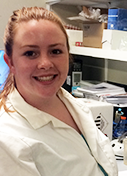Below is a summary of the abstract you submitted. Presenting author(s) is shown in bold.
If any changes need to be made, you can modify the abstract or change the authors.
You can also download a .docx version of this abstract.
If there are any problems, please email Dan at dar78@pitt.edu and he'll take care of them!
This abstract was last modified on May 9, 2016 at 4:56 p.m..

New Zealand is a small country in the Southern Hemisphere primarily recognised for rugby, sheep and dairy farming but soon bacteriophage hunting will be added to that list. Throughout 2015/2016, students enrolled at Massey University in Auckland, New Zealand had the opportunity to experience authentic microbiological research in the form of isolating and characterising new bacteriophage.
For the purpose of this enquiry-based laboratory course in phage hunting, Mycobacterium smegmatis mc2155 was the host bacteria of choice. M. smegmatis was selected due to its ease to culture and rapid reproduction rate, ideal for the laboratory environment at Massey University. Granted that bacteriophages were discovered in 1915, M. smegmatis – relative of the infamous and deadly M. tuberculosis – only had its first bacteriophage discovered in 1947, isolated from moist compost. This location inspired our “Phage Hunters” to source samples from soil, compost, silage, livestock grazing areas, lake-side and beyond. The approximate latitude and longitude of Auckland where the samples were collected (36.6°S, 174.7°E), provided a rich diversity of conditions throughout New Zealand’s geographic isolation. From this selection four bacteriophage were isolated – Inca, StepMih, SeaNerd and PlainJane, each displaying unique plaque morphologies and phenotypes.
At the completion of several rounds of spot testing (identify and isolate putative plaques), all bacteriophage produced a combination of small lytic and larger turbid plaques after 24 hours of incubation at 37ºC. Interesting plaque morphologies were observed after 10 days from bacteriophage Inca suggesting that the clear plaques with a turbid circumference (referred to as a ‘halo’ morphology) were the result of an initially lytic phage which then changed to the lysogenic cycle as a response to the environment in the plate. A particularly exciting moment for the students occurred when we were able to use the electron microscope to survey the morphotypes of our bacteriophage. From these electron microscope images, we were able to hypothesise that we had several bacteriophages from the siphoviridae family!
The “Phage Olympics” – series of persuading presentations from each student vying for the opportunity to get their phage Illumina shot gun sequenced at the Pittsburgh Bacteriophage Institute resulted in success for Inca and StepMih. The genomic annotation of both these cluster A3 and E mycobacteriophage is in progress and will provide the basis for further in depth understanding. Preliminary results indicate that Inca (cluster E) and StepMih (cluster A3) are distinctly different bacteriophages. With a genome length of 74,070bp and 50,841bp, Inca and StepMih (respectively) differed also in GC content and overhang length/sequence. Genome annotation will be completed in late May. Further information will be available to more accurately deconstruct and explore the genomes of these two bacteriophage.

